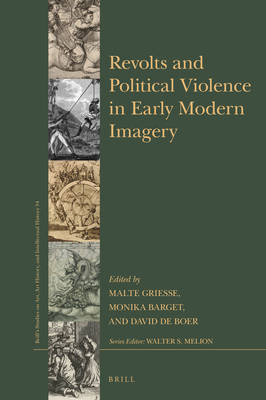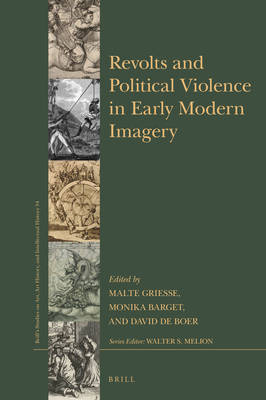
- Afhalen na 1 uur in een winkel met voorraad
- Gratis thuislevering in België vanaf € 30
- Ruim aanbod met 7 miljoen producten
- Afhalen na 1 uur in een winkel met voorraad
- Gratis thuislevering in België vanaf € 30
- Ruim aanbod met 7 miljoen producten
Zoeken
Revolts and Political Violence in Early Modern Imagery
€ 121,41
+ 242 punten
Omschrijving
In the early modern period, images of revolts and violence became increasingly important tools to legitimize or contest political structures. This volume offers the first in-depth analysis of how early modern people produced and consumed violent imagery, and assesses its role in memory practices, political mobilization, and the negotiation of cruelty and justice.
Critically evaluating the traditional focus on Western European imagery, the case studies in this book draw on evidence from Russia, China, Hungary, Portugal, Germany, North America, and other regions. The contributors highlight the distinctions among visual cultures of violence, as well as their entanglements in networks of intensive transregional communication, early globalization, and European colonization.
Contributors: Monika Barget, David de Boer, Nóra G. Etényi, Fabian Fechner, Joana Fraga, Malte Griesse, Alain Hugon, Gleb Kazakov, Nancy Kollmann, Ya-Chen Ma, Galina Tirnanic, and Ramon Voges.
Critically evaluating the traditional focus on Western European imagery, the case studies in this book draw on evidence from Russia, China, Hungary, Portugal, Germany, North America, and other regions. The contributors highlight the distinctions among visual cultures of violence, as well as their entanglements in networks of intensive transregional communication, early globalization, and European colonization.
Contributors: Monika Barget, David de Boer, Nóra G. Etényi, Fabian Fechner, Joana Fraga, Malte Griesse, Alain Hugon, Gleb Kazakov, Nancy Kollmann, Ya-Chen Ma, Galina Tirnanic, and Ramon Voges.
Specificaties
Betrokkenen
- Uitgeverij:
Inhoud
- Aantal bladzijden:
- 340
- Taal:
- Engels
- Reeks:
- Reeksnummer:
- nr. 54
Eigenschappen
- Productcode (EAN):
- 9789004461932
- Verschijningsdatum:
- 25/11/2021
- Uitvoering:
- Hardcover
- Formaat:
- Genaaid
- Afmetingen:
- 155 mm x 235 mm
- Gewicht:
- 753 g

Alleen bij Standaard Boekhandel
+ 242 punten op je klantenkaart van Standaard Boekhandel
Beoordelingen
We publiceren alleen reviews die voldoen aan de voorwaarden voor reviews. Bekijk onze voorwaarden voor reviews.










